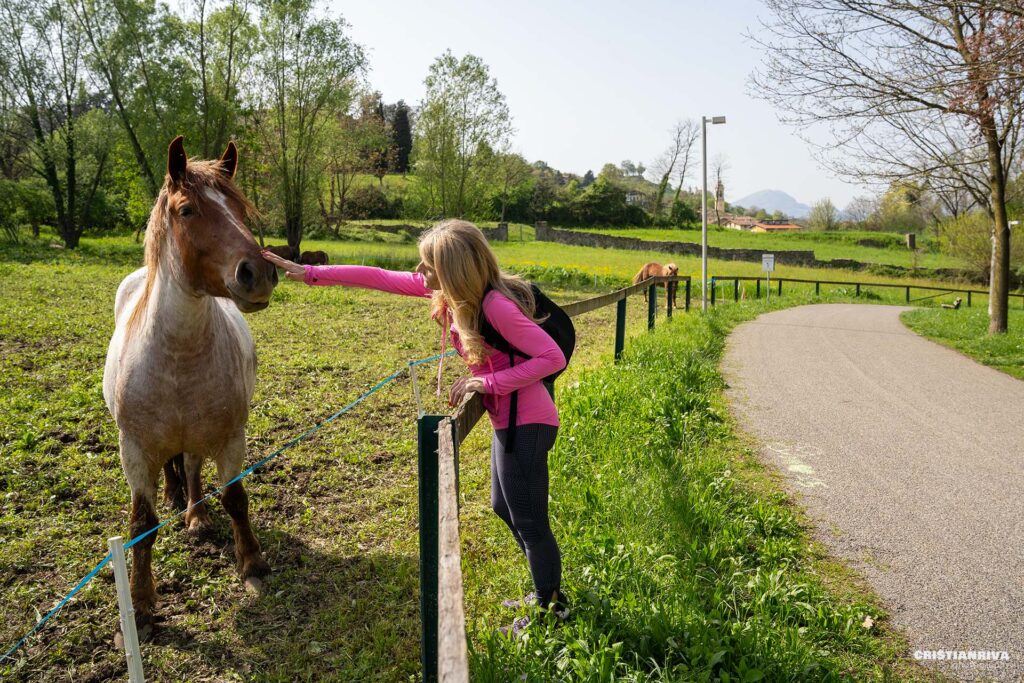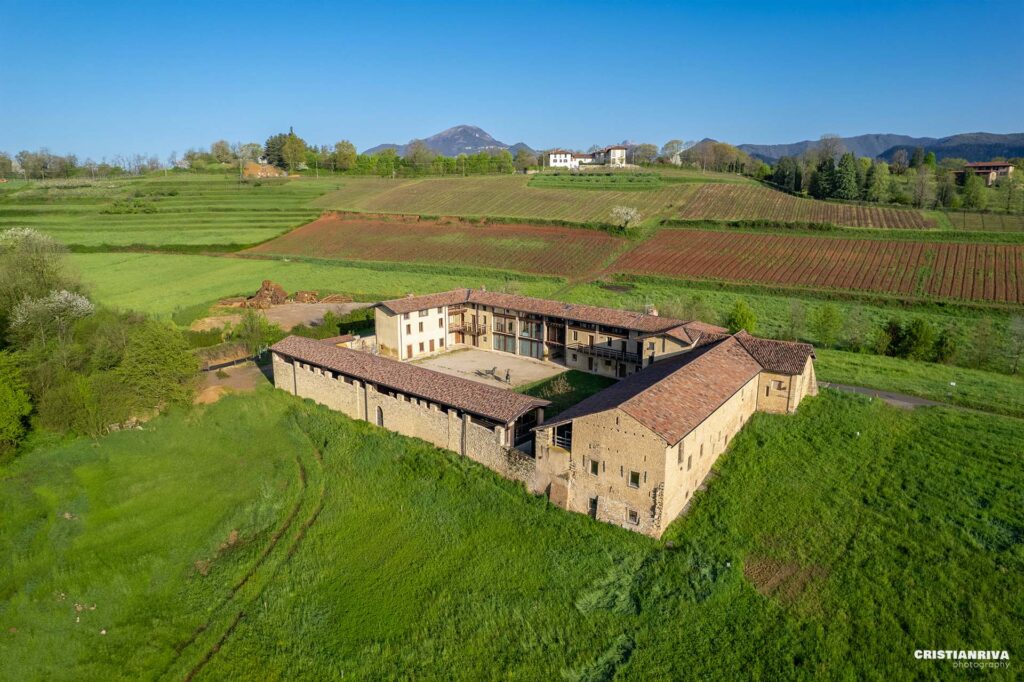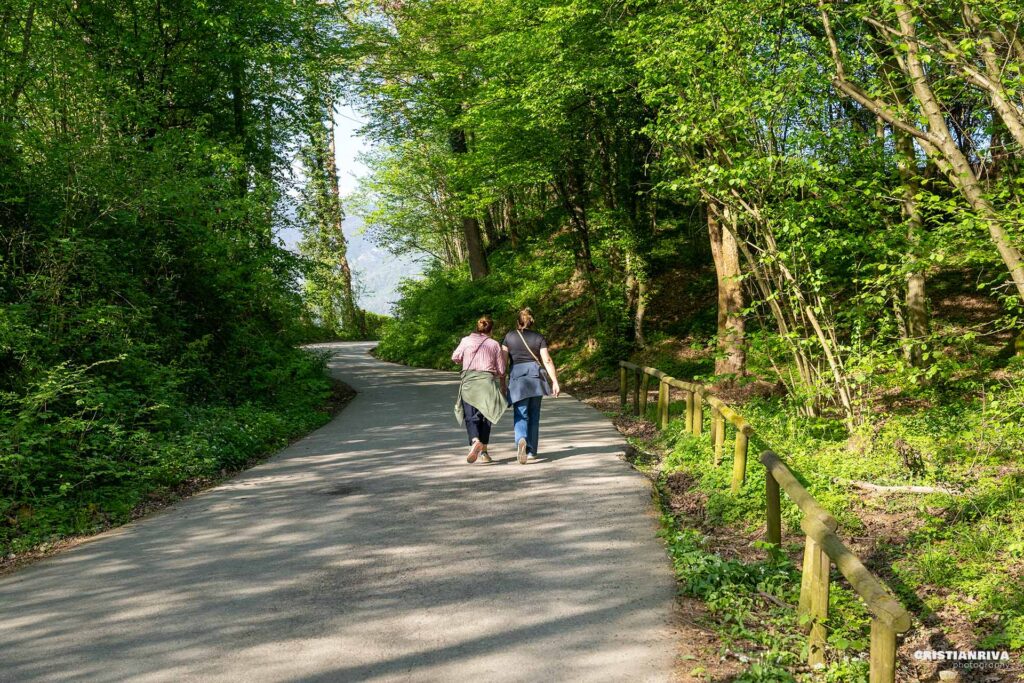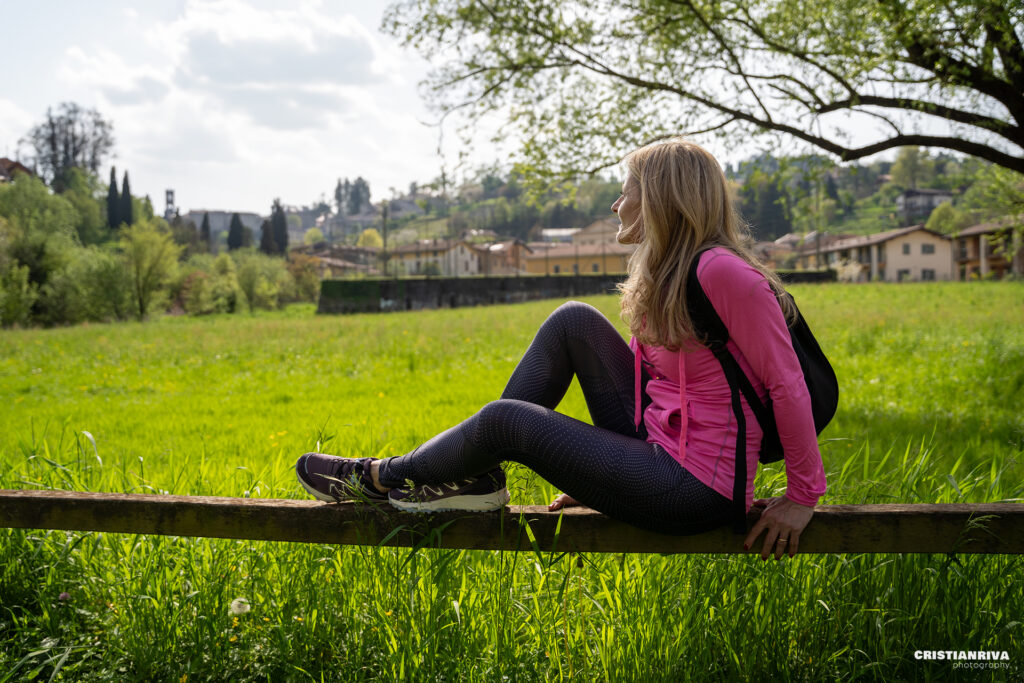In Bergamo, natural landscapes combine with historical beauty, a feature of this route suitable for those who want to discover nature within walking distance of the city center while immersing themselves in the tranquility of the Bergamo hills.

The journey begins with an enchanting view of Bergamo from Via Sporchia.
Skirting the entrance to the Polisportiva dei Colli, you find the Morla stream on the right, while opposite is the dominant green sloping down from Città Alta, the city’s historic heart.
From Via Castagneta, a name that recalls the wide spread of chestnut groves on Bergamo’s hills, take the elevated walkway near the former Valmarina monastery: you are inside the Parco Regionale dei Colli di Bergamo.
The monastery, which rests gently within it, was purpose-built near the streams present in 1150.

The path continues through the woods along Strada del Mulino street, near the Quisa stream, and accompanies you to the paved ascent that leads to the Sombreno Shrine.
Known as the Shrine of the Nativity of Mary, it was built in the 15th century from the union of two sacred buildings: Santa Maria Addolorata and Natività di Maria Santissima.
From the paved slope continue on a stone road that will lead you to the gate in the shape of a small temple, the entrance to the shrine.
Inside, in addition to the artwork of the period, you absolutely must admire the Sombreno bone, evidence of the creatures that inhabited the prehistoric lake in the area, which has now disappeared.
Before resuming your walk, a stop on its grassy churchyard is recommended to admire the Bergamo mountains.
Leaving the magic between the sacred and the profane behind, the route resumes by crossing a section of the Valle Brembana bike path, which directs you to the striking Sanctuary of the Madonna della Castagna, located at the foot of the hills and built in 1310 after an apparition of the Madonna to a farmer from the neighboring fields, hence its name.

Behind the shrine, the route begins to climb toward Roccolone Hill on a sometimes uneven path.
The trail becomes more challenging, immersed in vegetation where you may notice roccoli, vertical hunting arbor systems now in disuse, but the effort is soon repaid by the view across the plains.
Retrace your steps and you will find yourself on a paved road on Via Colle dei Roccoli to the Church of San Sebastiano, a historic gem with frescoes dating from the 14th and 15th centuries that tell the story of the faith of this area.
To the left of the church climb the steps on Via del Rione to reach the top of Via Ramera, the access point to the woods along the Vasi Trail.
Once the staircase of Via del Rione is finished, the path continues flat, skirting the agricultural terraces, with views that span Mount Bastia, the temple of Sudorno and the small valley that welcomes the Astino complex below, until you reach Cà Moroni, a 15th-century farmstead with its old arches, which brings back memories of what was once a classic tavern then also called “Frasca” . By now downhill you can still admire the former monastery of Valmarina until you find Via Castagneta again, from which to take the path on the right that leads you to Via Valverde and following the Morla to Via Sporchia where the walk began.
